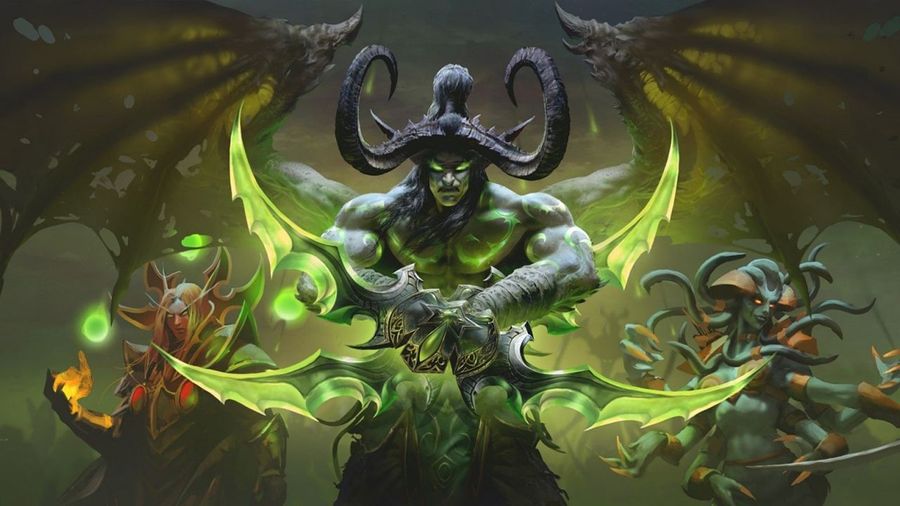As you well know, World of Warcraft is massive, and deep. There's lots to cover. Much of the coverage, including my own, has been centralised around raids, dailies and farming - very much the meat and potatoes of World of Warcraft.
But the further you go back, the more likely you are to find little tidbits and nuggets of information that are completely useless, but interesting. Or, at the very least, deserve to be recorded. Preferably in a manner less dry and matter-of-fact than a page buried in the storage area of wowhead.
This post is an effort to record some of the most interesting, if minor, parts of TBC that didn't make it to print elsewhere in my expansive, and quite dull, series of blog posts.
Article One - Guild Banks
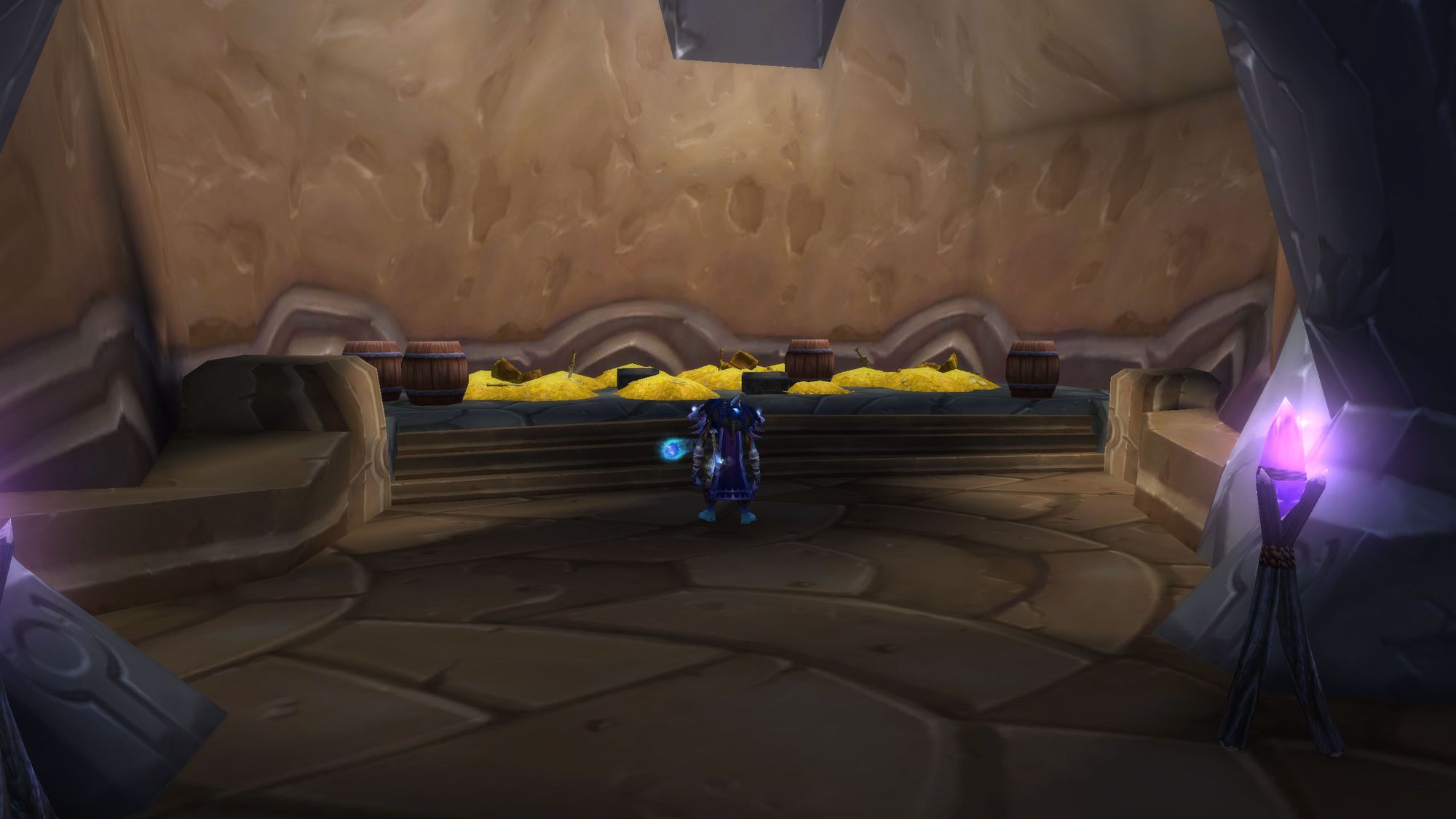
World of Warcraft has long since made use of, and matured, the concept of guild banks. It's an accepted part of World of Warcraft - and for 9/10ths of TBC, this is also true.
But from the launch of phase one until the announcement of phase 2, there were no guild banks. Nope. Nada. Zip. Zilch. Resource management and sharing? What's that. Fortunately, phase one's raids had no real requirement to pool resources (although previous raids in classic required gear that would've no doubt required a collaborative effort to craft.)
But with Hydross, and Leotheras, came the requirement to build resistance sets for members of your guild. I don't think there's a connection between the two, but certainly the existence of guild banks made completing these tasks as a guild much easier.
Although this is before the era of guild achievements where 10% of everything you looted got turned into cash for the guild - and so the requirement to top up frequently when guild repairs were offered never ceased to be annoying.
Article Two - Heroics and Their Requirements
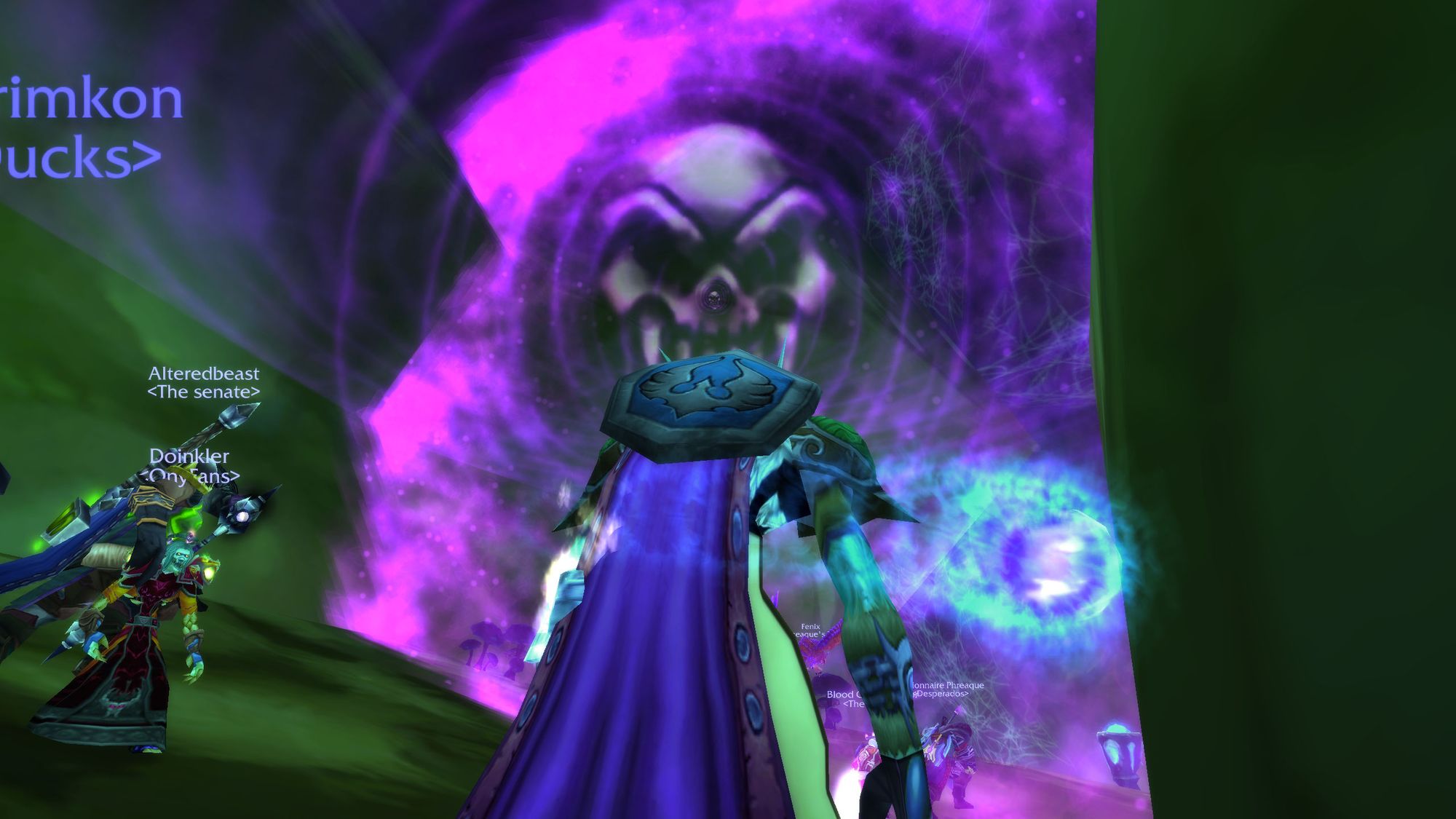
I have mentioned this in passing in other articles, but TBC did not muck about when it came to heroic difficulty in dungeons.
What is widely accepted as the easiest part of end-game content, was initially difficult. And time consuming to even get your foot in the door. We're still very much in the era of being made to work for every little thing the game has to offer, and heroics are no exception.
The initial set of heroic dungeons required you to buy a key which unlocked the difficulty. To access this key, you required revered reputation with each faction - Thrallmar (or Honor Hold if you're a loser), Lower City, The Sha'tar and Cenarion Expedition.

None of these factions had dailies to grind reputation, either - if you wanted to get to revered, you needed to run dungeons. A lot of dungeons. The daily normal dungeon quest would help with rep, but even the most crowded and populated dungeons would only yield around 1,500 reputation per run. So from honored to revered was between 8 - 10 normal dungeon runs.
Some factions did have methods of turning in items for reputation, but either they only worked to a certain reputation level, or they were available in very limited quantities, such as the Coilfang Armaments for the Cenarion Expedition.
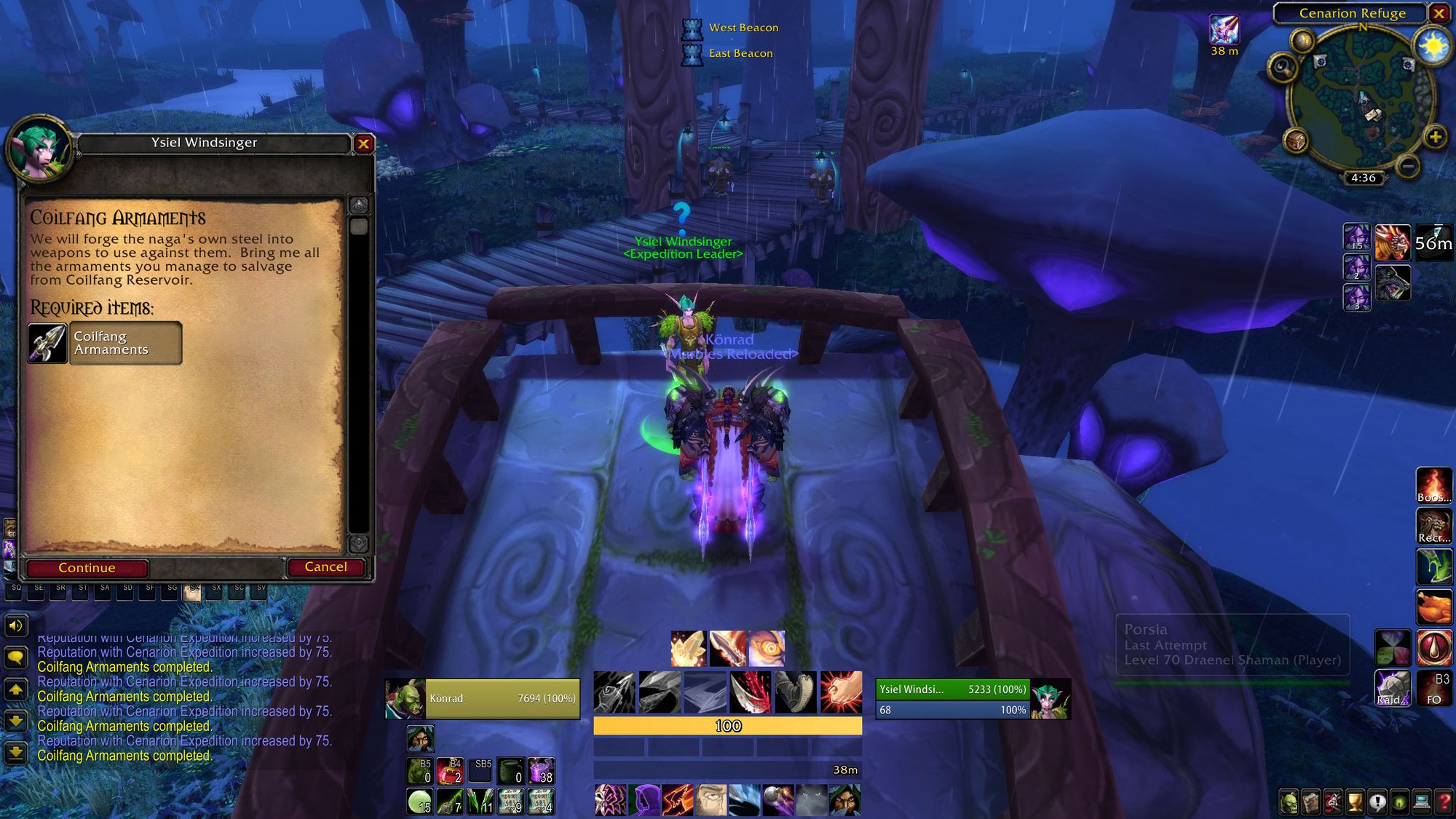
Heroics were also hideously difficult. Long forgotten mechanics like crowd control and threat were very much factors. And whilst your chad pumper geared warlock might do work with the right support, if he's ripping threat with three shadow bolts, he's not much help, is he.
Some dungeons were nearly impossible with the wrong tank. Warriors and Druids had severe caps placed on their AoE abilities, which had comparatively little scaling and so produced miniscule threat. Paladins were the gold standard, but all that threat came with a price. Easily the most fragile of the three, an undergeared Paladin with no crowd control would soon find themselves lying face down, particularly in really heavy hitter dungeons like any of the Hellfire Citadel instances.
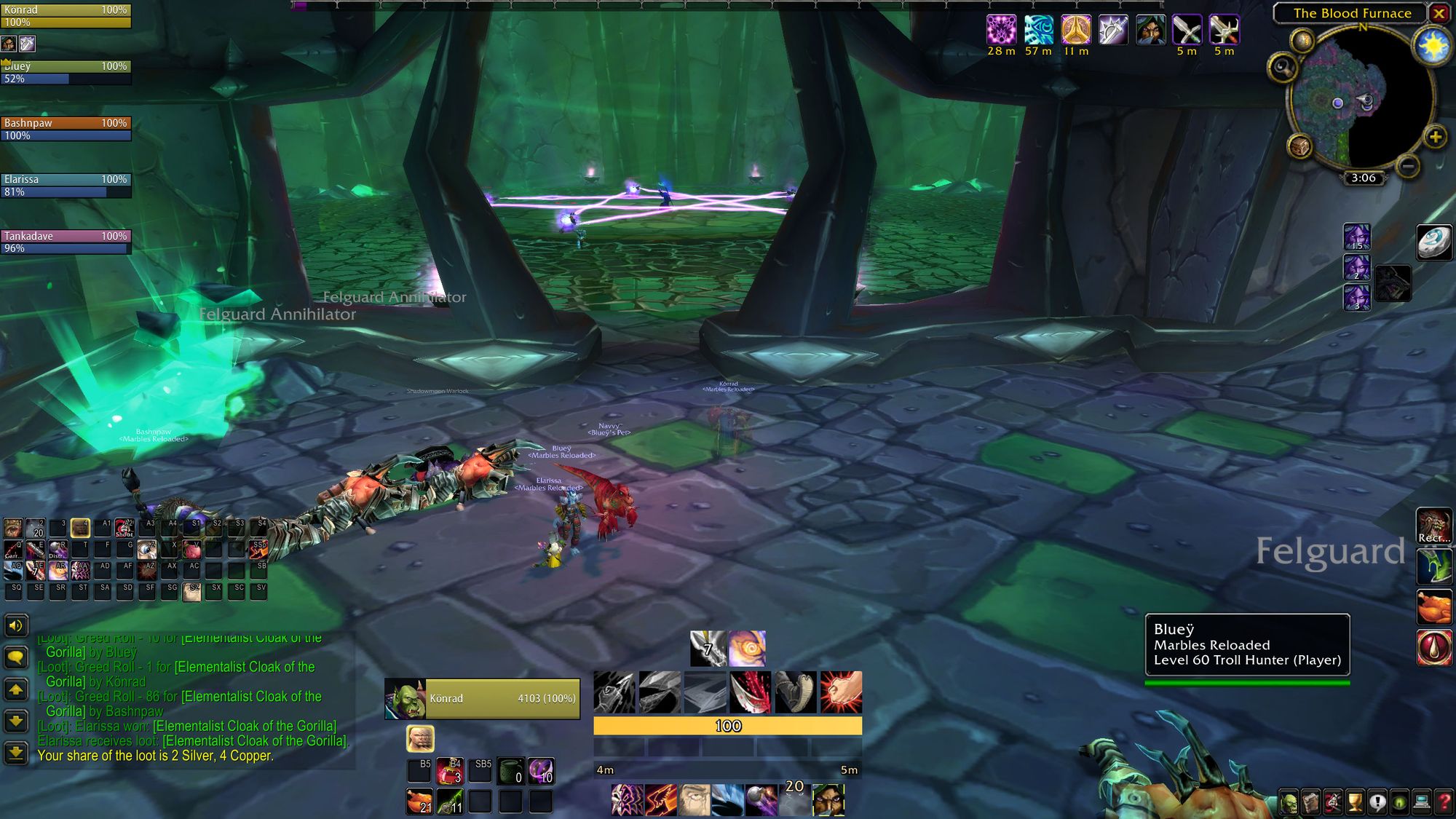
Some of the bosses had oneshot mechanics that required an offhealer, or specific resistances. Harbinger Skyriss, the end boss of the Arcatraz, on Heroic, was able to one-shot anyone but a tank with 8,000 shadow damage in the space of four seconds. Even the most geared of clothies in phase one were only packing around 6-7k health. If the individual didn't have full health, they were done for, and sometimes, even if they did. Shadow Protection or Shadow Resistance did help, but often was nowhere near enough.
It wasn't all bad - some instances like the Steamvault and Botanica were good instances to safely farm badges. And some places, you went nowhere near - Blood Furnace and Mana Tombs spring to mind.
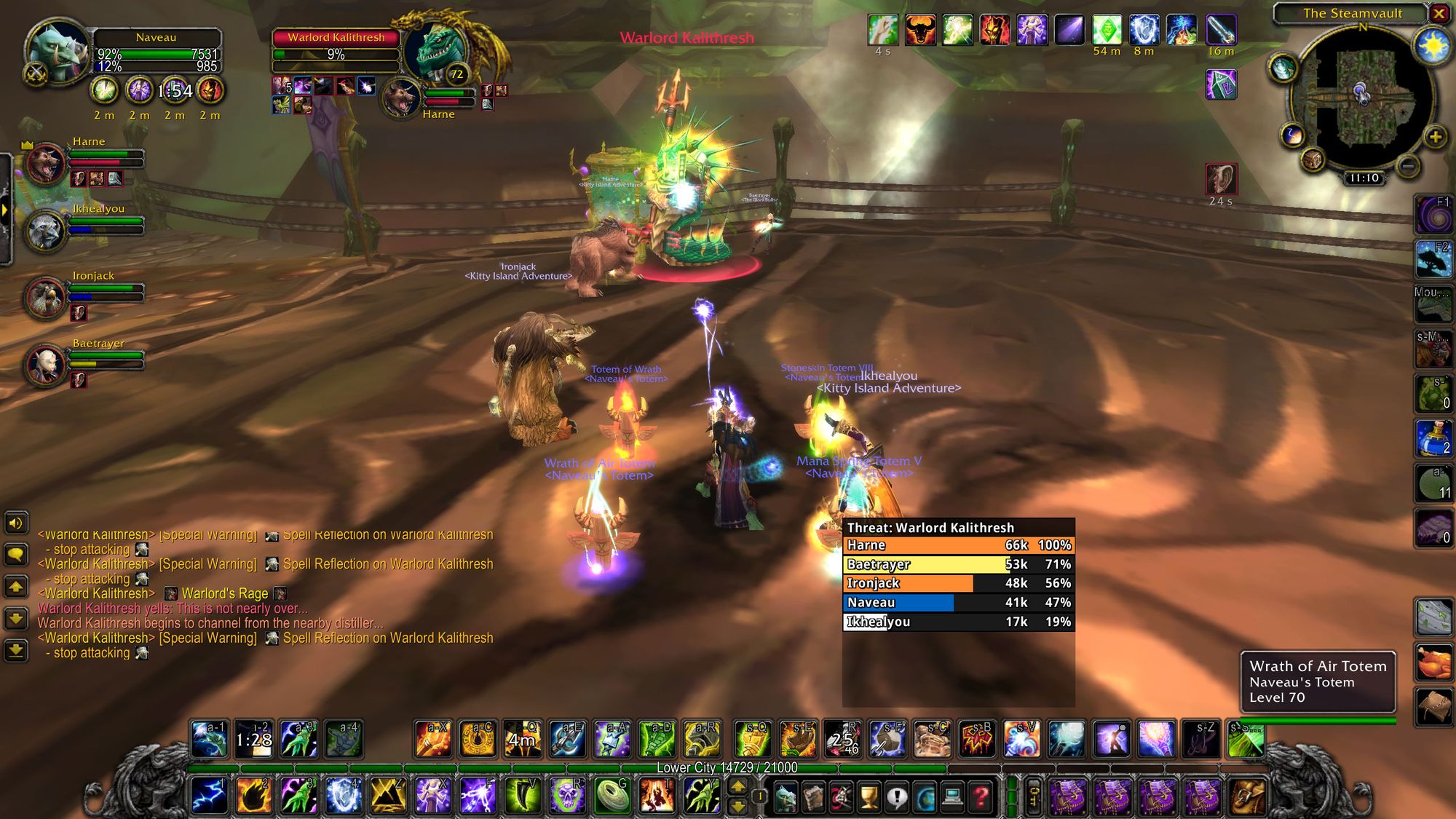
To this day, TBC remains the only expansion where the recommendation is to go to Karazhan first, gear up, then do heroics. That should give you an indication of just how challenging they were. And of course, as has been pointed out, a number of the most difficult heroics were required for phase two attunements. So win, lose, or draw, you had to tackle them eventually.
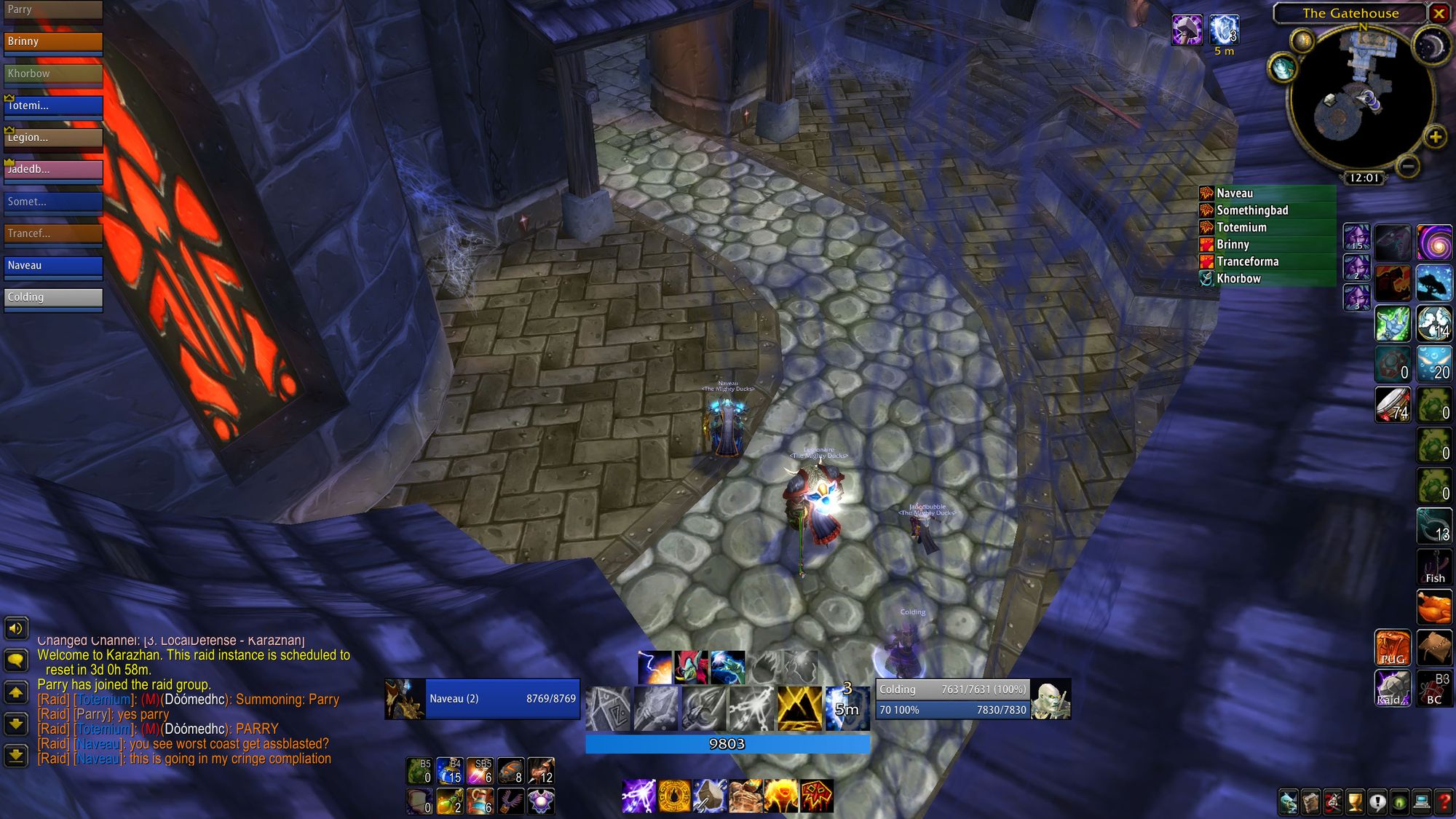
Eventually the heroics were nerfed into the ground and the reputation requirements were reduced to honored. And with those two changes, went one of the most unique parts of TBC.
Article Three - PvP
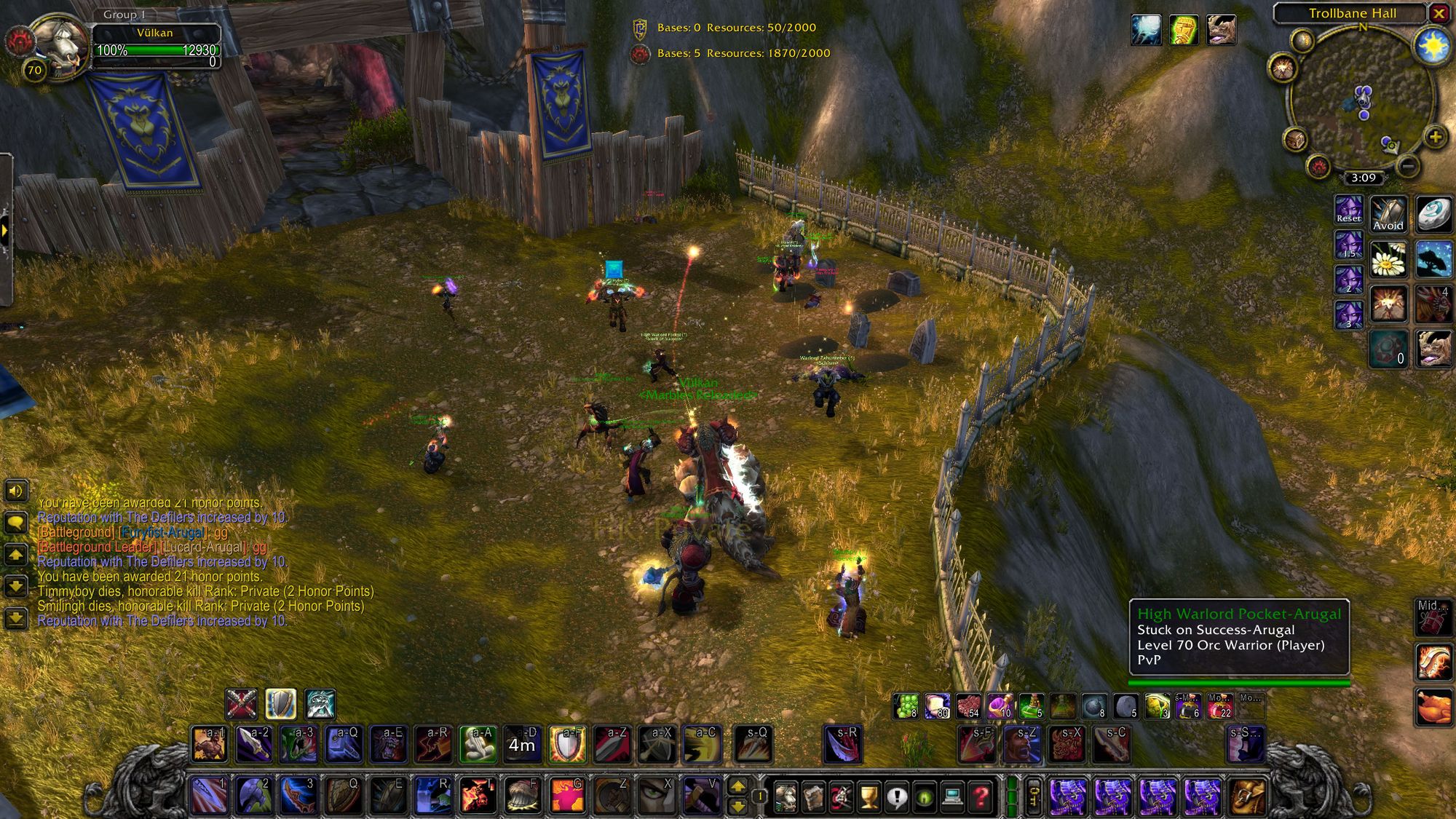
This has been touched on in some articles, but PvP underwent quite a transformation in TBC. In phase one, it was a big grind to obtain even PvP offpieces. I can remember before the price cuts, farming almost 17,000 honor over a week in order to buy a single item. Never mind the marks of honor.
Now, you might be thinking to yourself - "what's a scrawny little nerd like you doing in the big boy's club of battlegrounds and arena?"
The short answer is that resilience, later a PvP only stat, is pretty valuable as a tank - particularly for warriors and druids. Every point in defence rating increases other mitigation stats - block, dodge and parry. Which is ok, until you realize that as a warrior, if you're spending your entire time blocking, dodging and parrying, you don't get any rage.
Enter resilience.
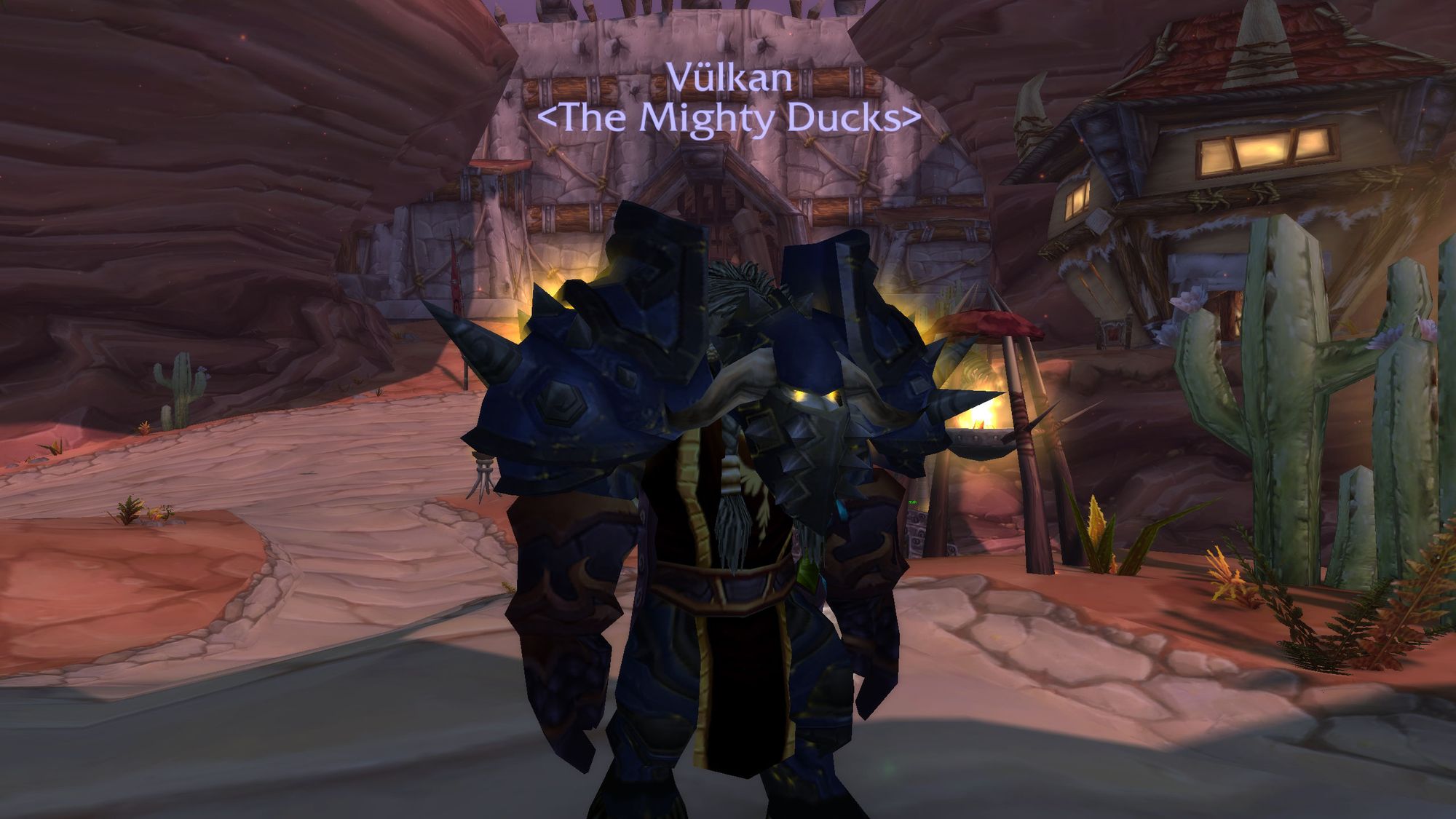
Resilience (in TBC, anyway, don't at me, WoTLK nerds) is more valuable per point for reducing the chance you will be critically hit. This stat has long since changed, but in TBC (and also Wrath, though it is far less valuable) it worked on NPCs. This meant items from PvP that had secondary stats like critical strike, strength and stamina, alongside resilience, were very valuable as they directly increased threat output. They had less mitigation, but Warriors have shield block, last stand and shield wall - what they need is more threat.
The same is true for bears, albeit for different reason. Druids don't get any defence rating from their gear, which makes them have to make strange choices when it comes to gearing. Resilience removes that pressure, and allows them to either pile on mitigation for really full-on bosses like Morogrim, Archimonde, Mother Shahraz, and Gathios the Shatterer.
That is largely outside the point though. Proper PvP players were complaining that it took way too long to obtain items. Amazingly, Blizzard listened and introduced a raft of changes.
Firstly, the daily battleground quest rewarded badges alongside honor. A small change, but a welcome one.
Secondly, prices on a swathe of items were reduced by more than half. Arena stayed the same, although the rate of arena point gain was increased, if only slightly.
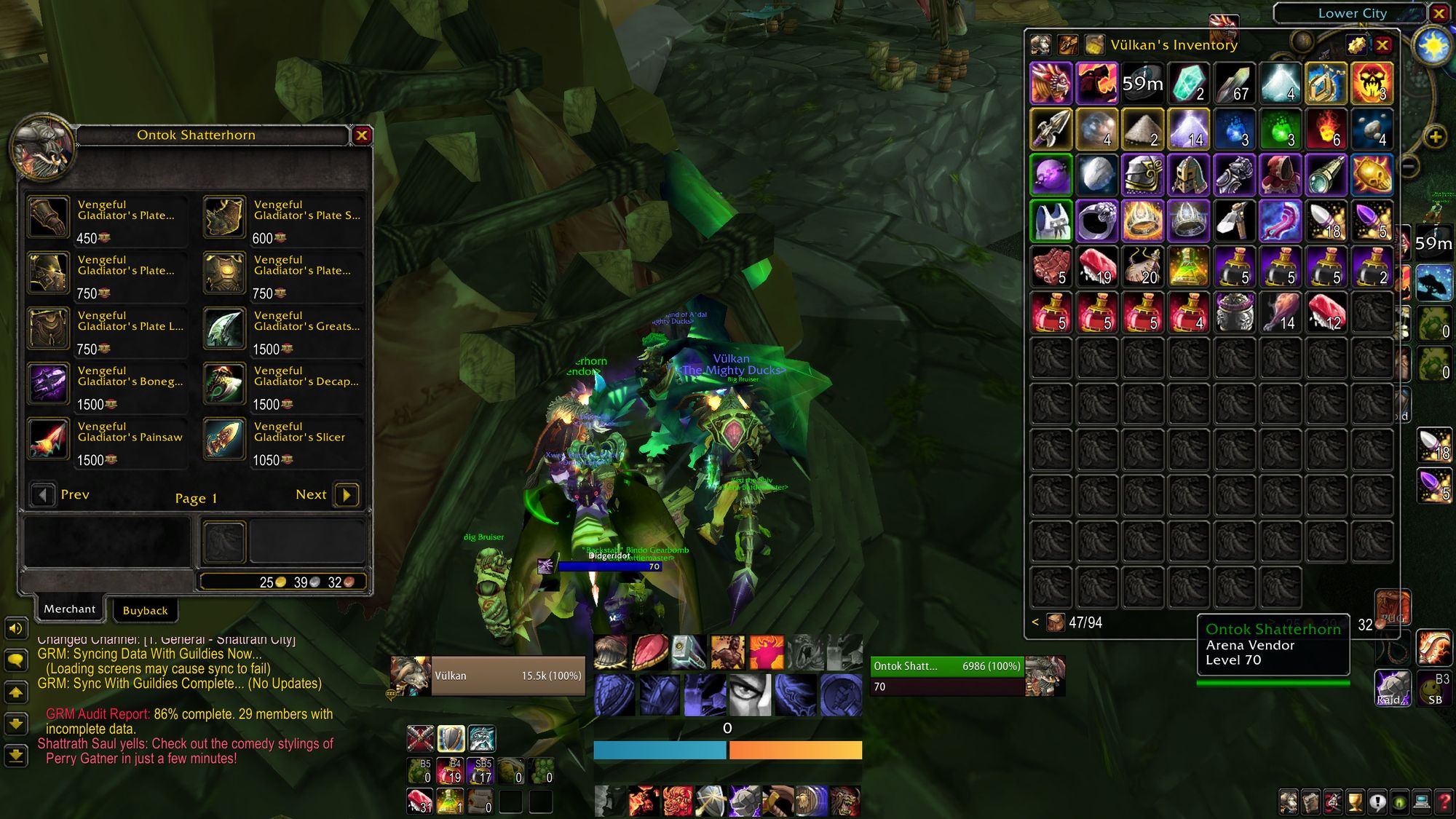
And thirdly, perhaps most impactfully, Blizzard dramatically increased the honor rewards for the daily battleground, Hellfire Peninsula Towers and Terokkar Forest towerds (and also Halaa, but that was proper PvP.) Without setting a foot in a single battleground, you could earn 2,000 honor in a day. Add in your daily BG and suddenly you were earning enough honor in a week to buy premier off-pieces.
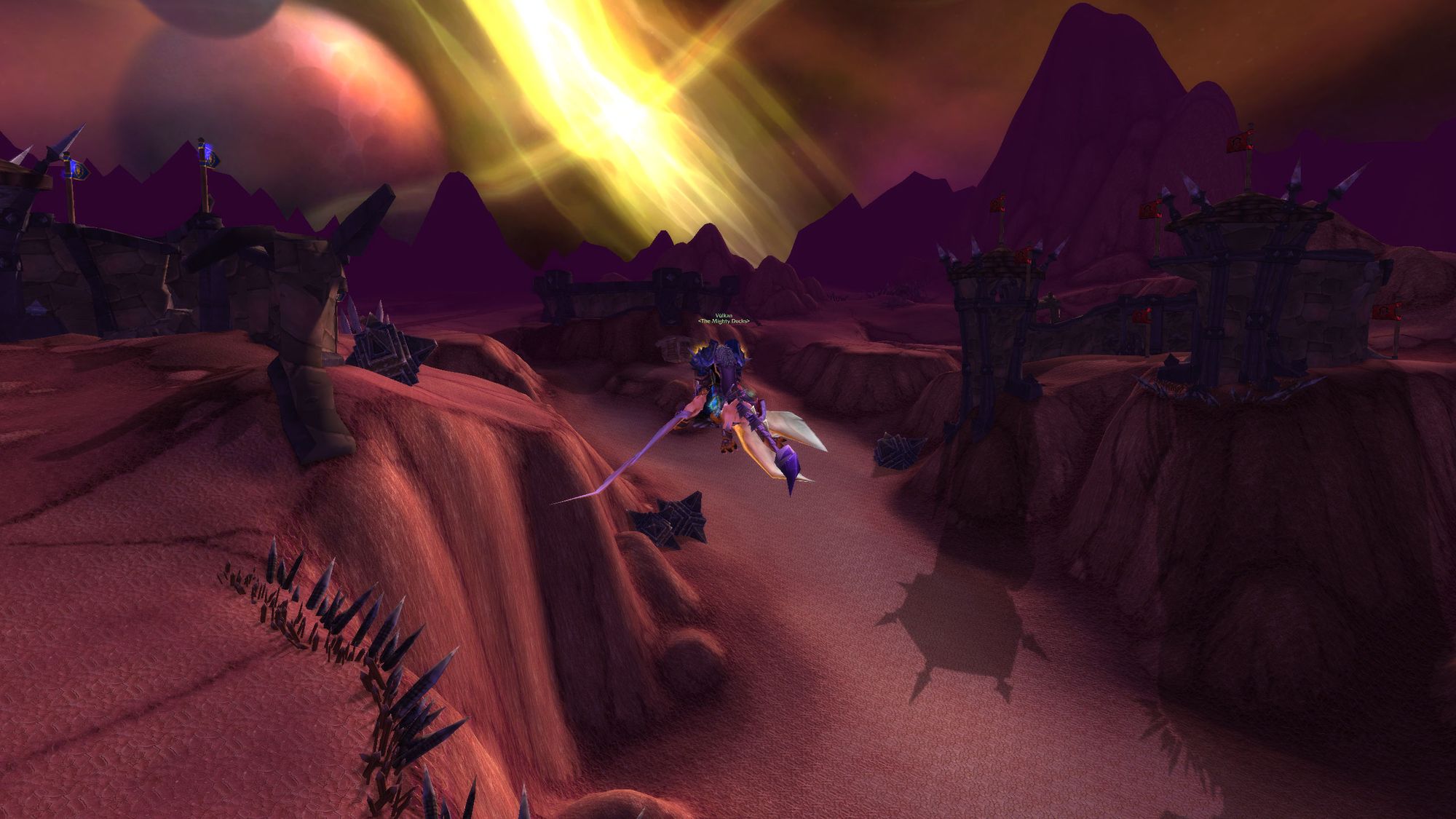
Even non-tank classes got in on the action, as some of the off-pieces, whilst not better than items obtained in raid, covered gaps whilst the good stuff was acquired. Particularly the previous season's weapons, rings, trinkets (not to mention you needed the PvP trinket for Archimonde in phase three anyway...)
What is most interesting, however, is how this changed the dynamic of those world PvP quests. Because it was so lucrative, there was cross-faction collusion to flip the towers, then let a horde side player flip them back. And so on, and so forth, all day.
For the Terokkar Towers, you'd see all the Alliance players descend on one tower, and all the Horde players descend on another, like a swarm of angry locusts. There'd be no PvP afterward, just, honor gained. Unless you were particularly bloodthirsty, like some on both sides were.
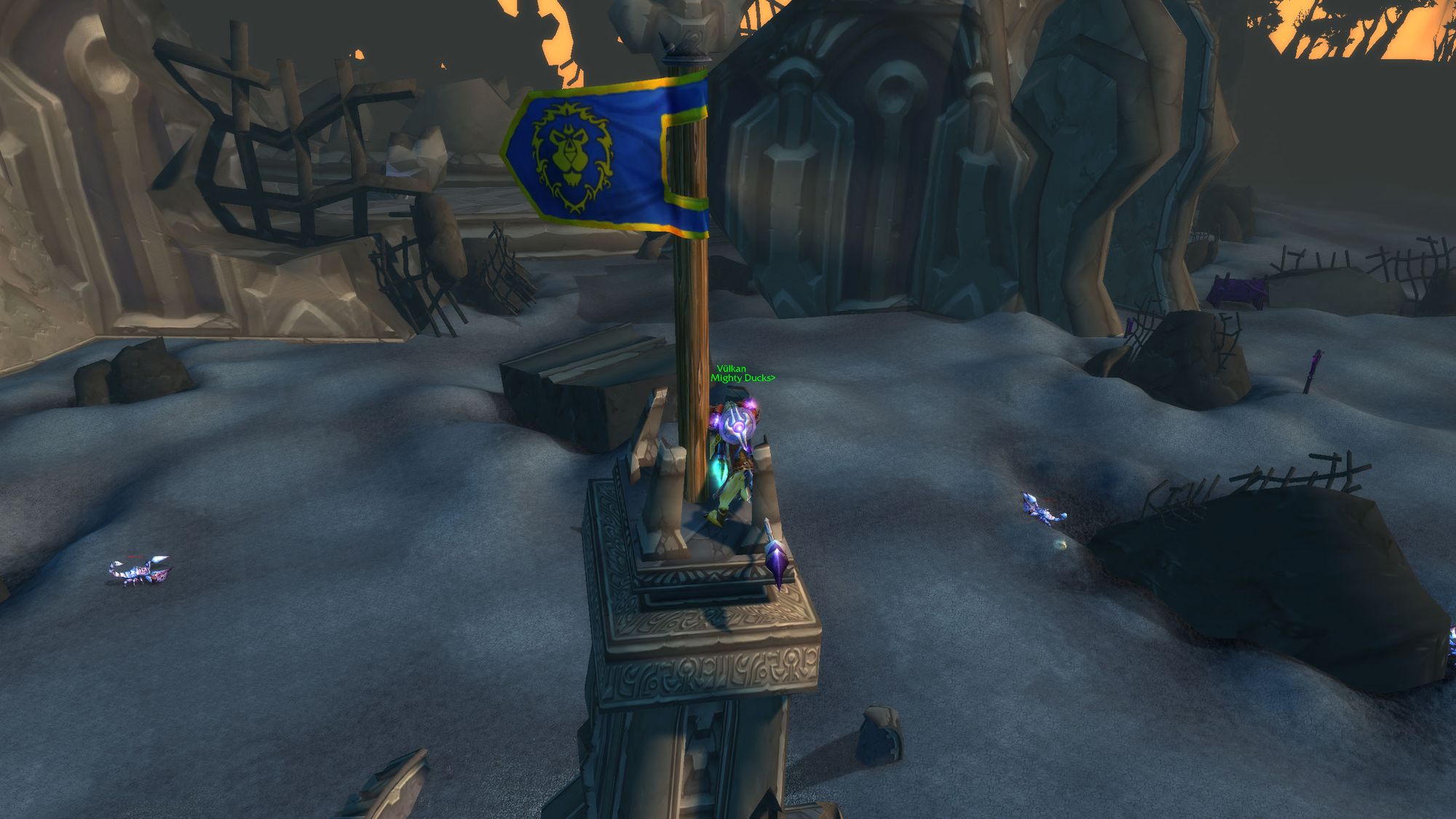
Whilst levelling my rogue I took the time to go back and do all three daily PvP quests - and when I hit 70, my rogue was the proud recipient of a pair of Merciless Gladiator's Swords. They weren't glaives, but they got the job done.
Article Four - Aldor versus Scryer
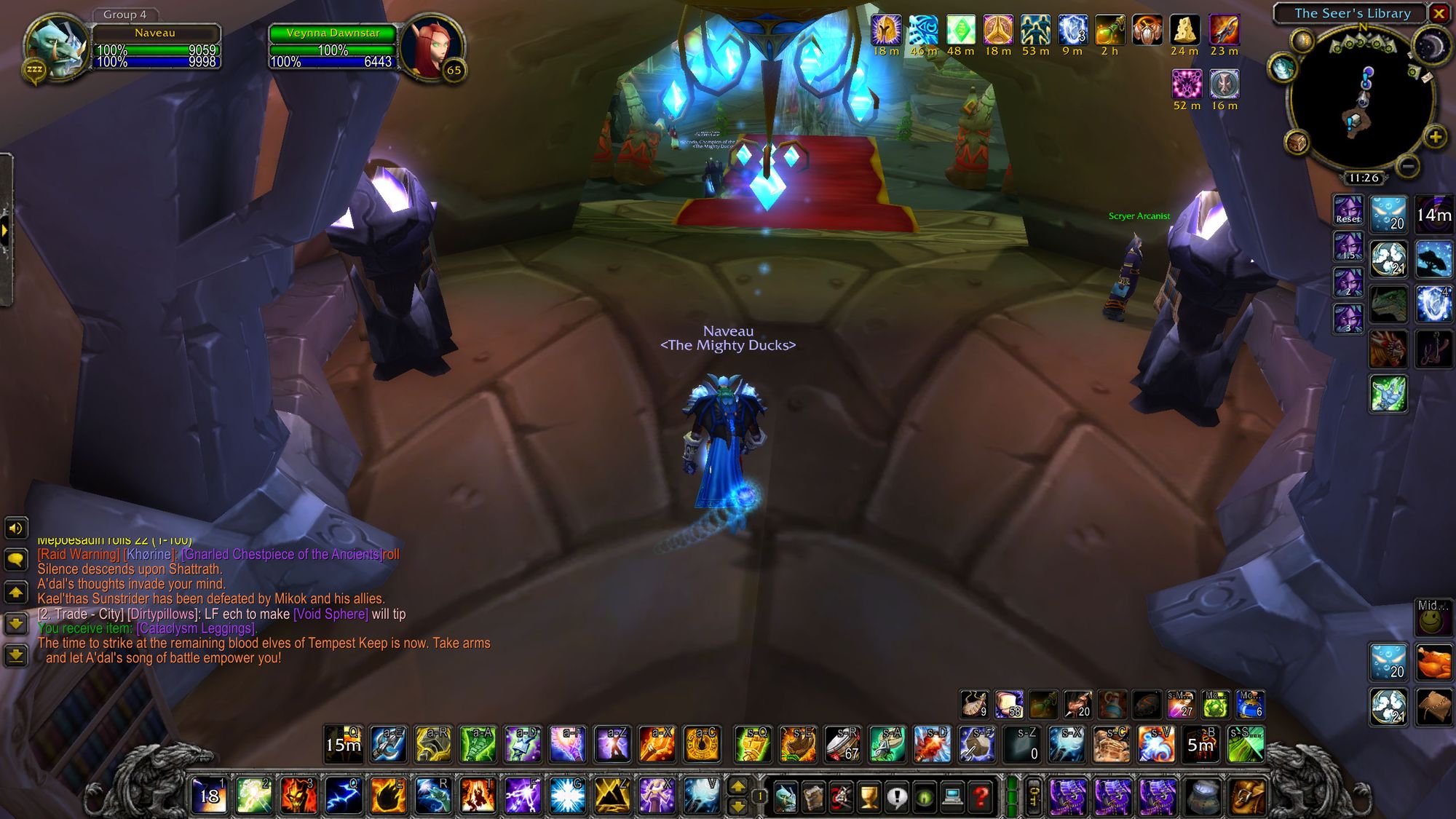
This isn't a unique part of TBC, but for the sake of preserving the history of the expansion, this is something I feel deserves a mention.
After you've been in Outland long enough to reach Shattrath City, you'll go on a long boring escort quest showing you around the city and explaining to you the history of the city and of its people.
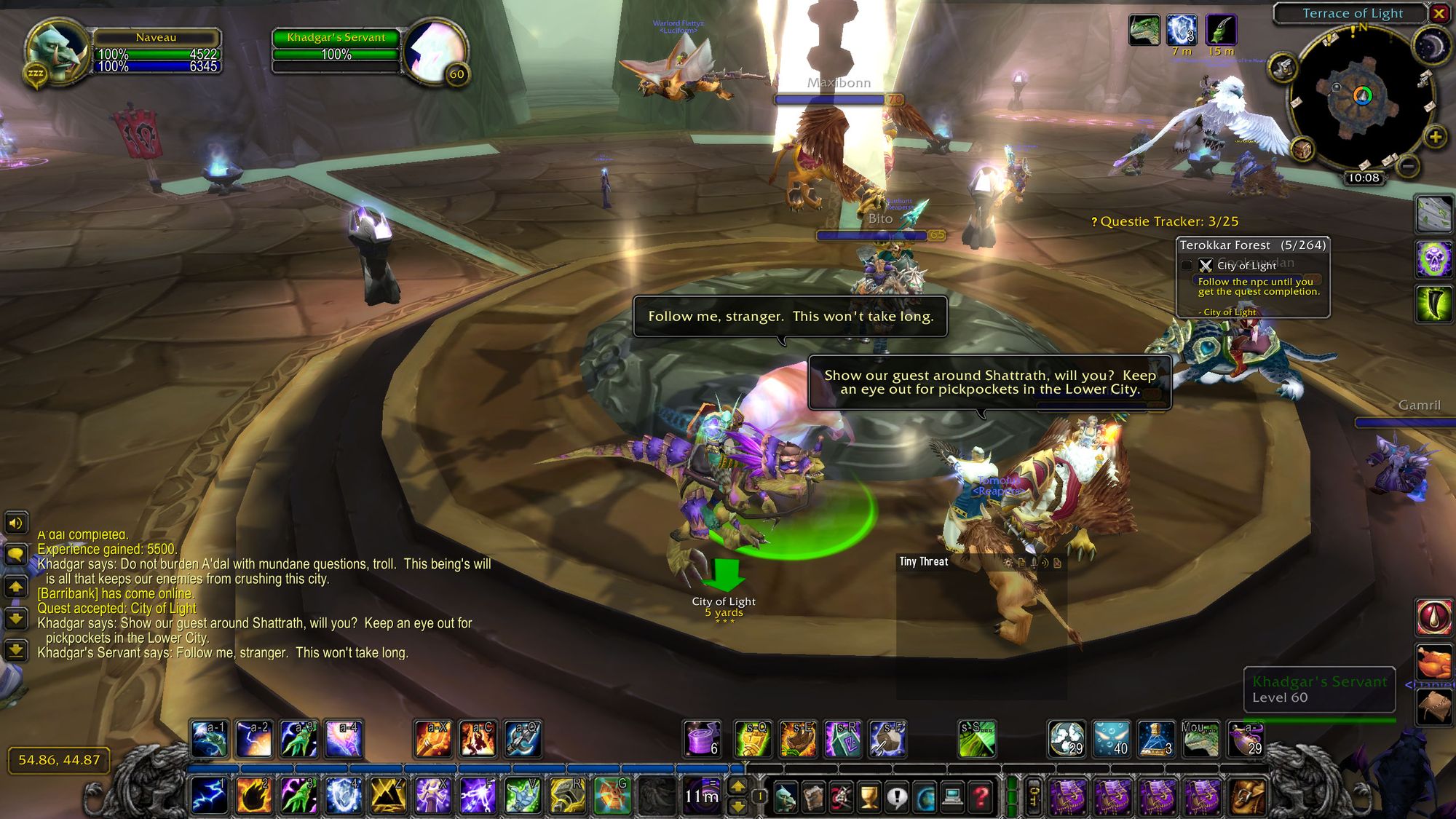
Along the way, you hear a most important tale - that is, how Vorenthal the Seer came and surrended to the Sha'tar, and joined the forces of good. As the forces of Kael'thas in Outland had slaughtered the draenei, this was not soon forgotten by the Aldor, who despite being aligned with the Sha'tar, remained hostile to the faction known as the Scryers.
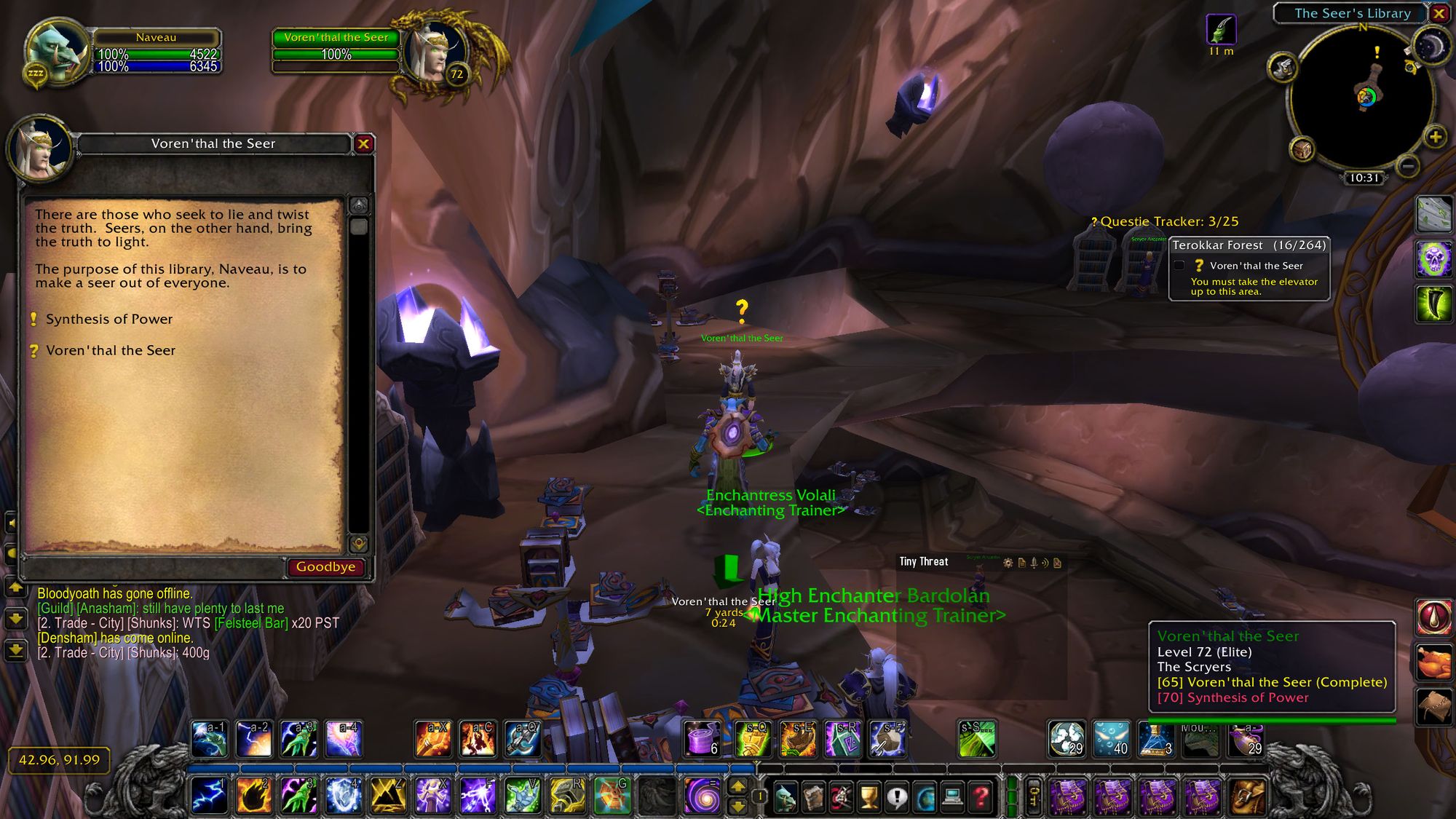
"Cool story, thanks Vorthos," you might say. But the relationship between the Aldor, the Scryers and the Sha'tar in many ways, underpins the entire expansion. It's about unlikely allies (sometimes) working together to achieve common goals, even though they hate each other's guts.
Lore aside, how it all works in practice is that you align yourself with either the Scryers or the Aldor. There is a repeatable quest which you can do (where you gather basilisk eyes or dreadfang venom sacs) to switch factions, although it requires a huge number of turn-ins.
Reputation with both of these factions is granted by turning in Arcane Tomes and Sunfury Signets (for Scryers) and Fel Armaments and marks of Sargeras (for the Aldor.) In addition, turning in Arcane Tomes and Fel Armaments rewards you with a currency you can use for shoulder enchantments, called "inscriptions".
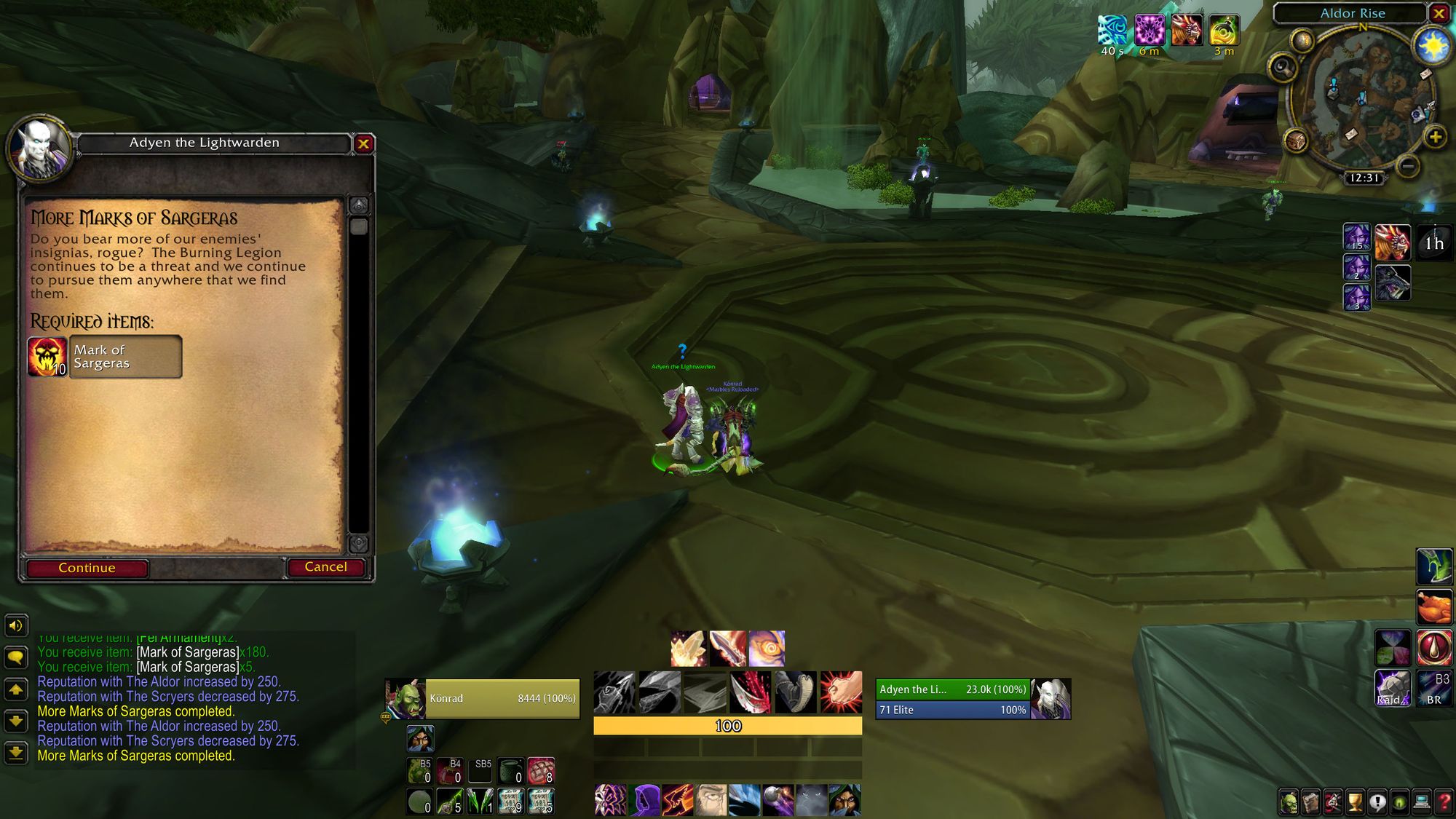
There are no other shoulder enchants offered in TBC, apart from classic shoulder enchants, so this turns out to be a critical choice, considering how low base stats are still in TBC, where an inscription can represent 10% or more of an item's base stats.
Both factions also offer a number of items and recipes, which adds some depth and complexity to your choice. Initially, the Scryers offer a very nice trinket which is useful for casters, due to the high amount of spell hit rating required (by warlocks and fire mages). The Scryers also offer an inscription which is better for classes which depend on critical strike rating (such as elemental shamans) instead of raw spellpower.

The Aldor on the other hand, are much better for physical DPS and tanks. Their shoulder inscriptions grant more raw attack power and critical strike, in addition to an initially useful weapon, the Vindicator's Brand.

Some particularly clever (or insane) people realised that you can retain all the relevant trinkets and items for your class and then switch, which can make this a bit of a non-choice. But for us mortals, it's an interesting little part of TBC.
Article Five - Catchup Mechanics

As you'd know by now (if you've read the rest of my garbage articles), phase four represented the first of TBC's catchup mechanics. If you've played retail for a while, you'd know that catchup mechanics and being given gear as a reward for grinding is quite commonplace.
Perhaps for the better, perhaps for the worse, until phase four - Blizzard didn't see it that way. Yes, there was a small amount of badge gear available (some of which was quite good), but unlike future expansions (such as the next one) there was no help coming if you didn't get any upgrades in your raid.
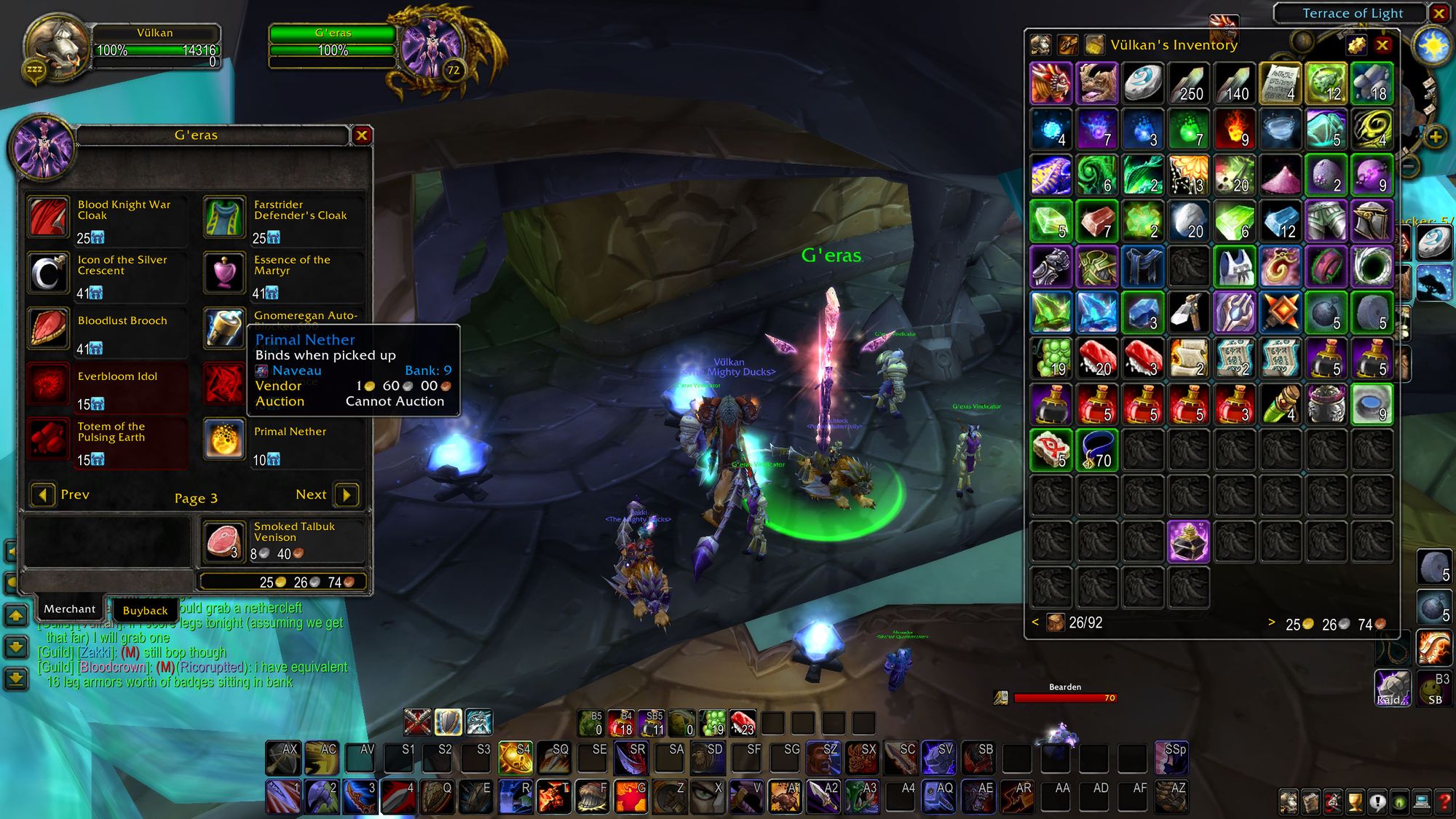
Not to mention that in phase one, you only got a single token from 25-man raids. It wasn't until phase two, when you no longer needed tier 4 gear, that tokens started to increase in frequency.
I neither agree, nor disagree with any of these design decisions. It is what it is. What I found interesting, is that it rewarded players and guilds who had been actively clearing content for longer as they had more looks at key items like DSTs, Aldori Legacy Defenders and tier tokens.
In fact, prior to the release of phase three, for the last eight weeks of phase two, post nerf, the Ducks took what I consider to be their most critical decision - to run a split raid. Taking advantage of the reduction in difficulty they doubled their loot pool, and so the core raid walked into Black Temple on week one armed to the teeth.
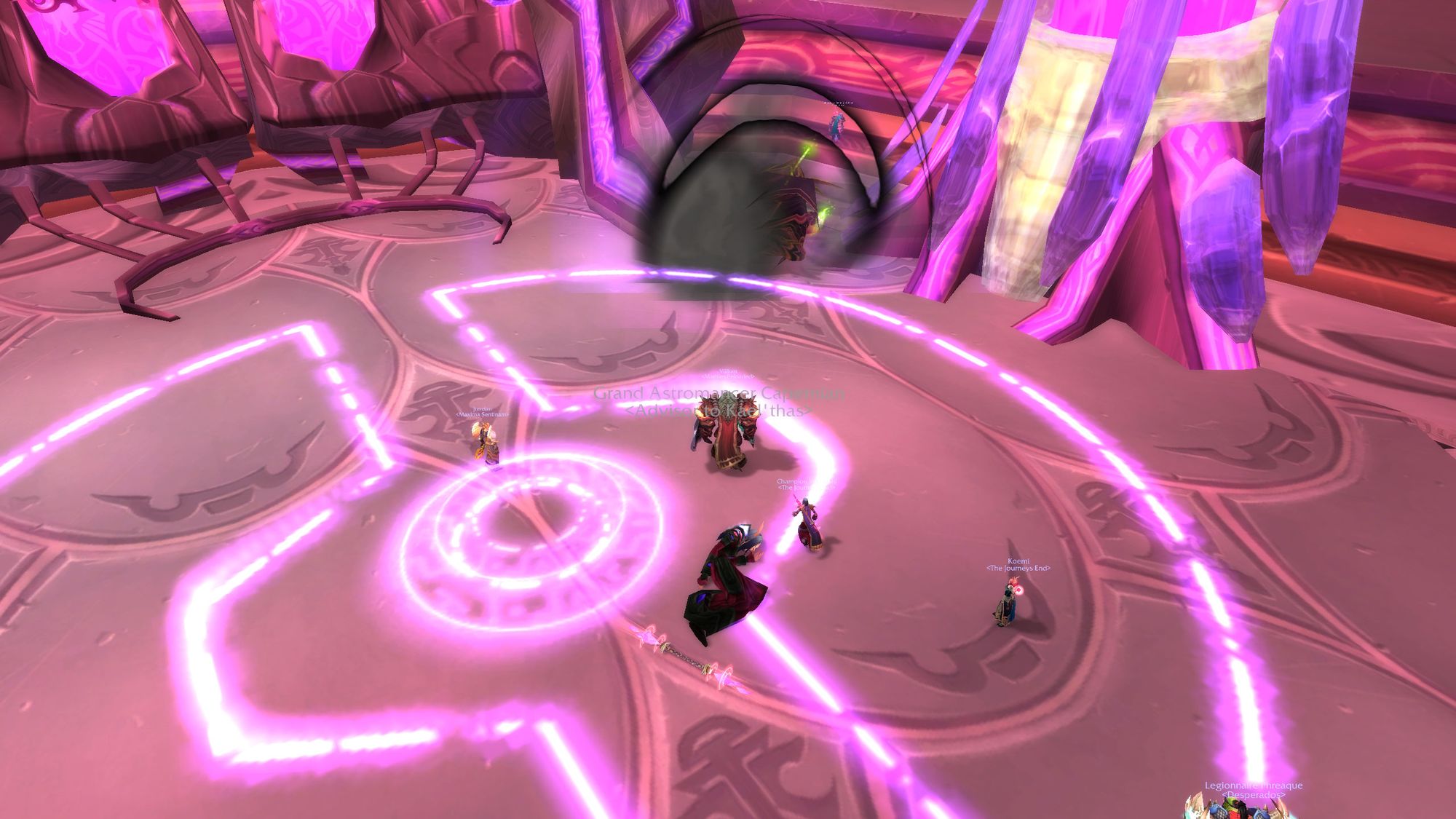
Many guilds who only had one or two looks at post-nerf Kael'thas and Lady V's loot table struggled initially with the higher healing and tanking requirements. Walls like Gurtogg, Mummy Sharon and others proved to be much higher obstacles to clear than for the Ducks, who had BT done and dusted, and thus were getting to see Illidan's loot table at least once every lockout since week three.
Whilst it's impossible to look into my crystal ball and say for certain that this is the reason many guilds fell apart, the guilds that didn't hit the ground running in TBC, clearing Karazhan, Gruul and Mag'theridon as early as possible, struggled in phase two with fewer looks at gear, and in turn, phase three. Those who did, such as Parseholes, Drop Bears, Luciform and Milk Puff, reaped the rewards in ways that perhaps they didn't realise. Some results were visible early, some results weren't visible until very, very late in the piece.
Do I think the same thing would've happened if you could purchase raid-quality gear in all slots with badges from phase one, like you can in Wrath? The jury's out, but, I suspect not. But it's part of what makes classic wow and TBC unique. No help was coming, and sometimes, you had to make something out of nothing, or fall apart. Many guilds chose option b, though it wasn't voluntary.
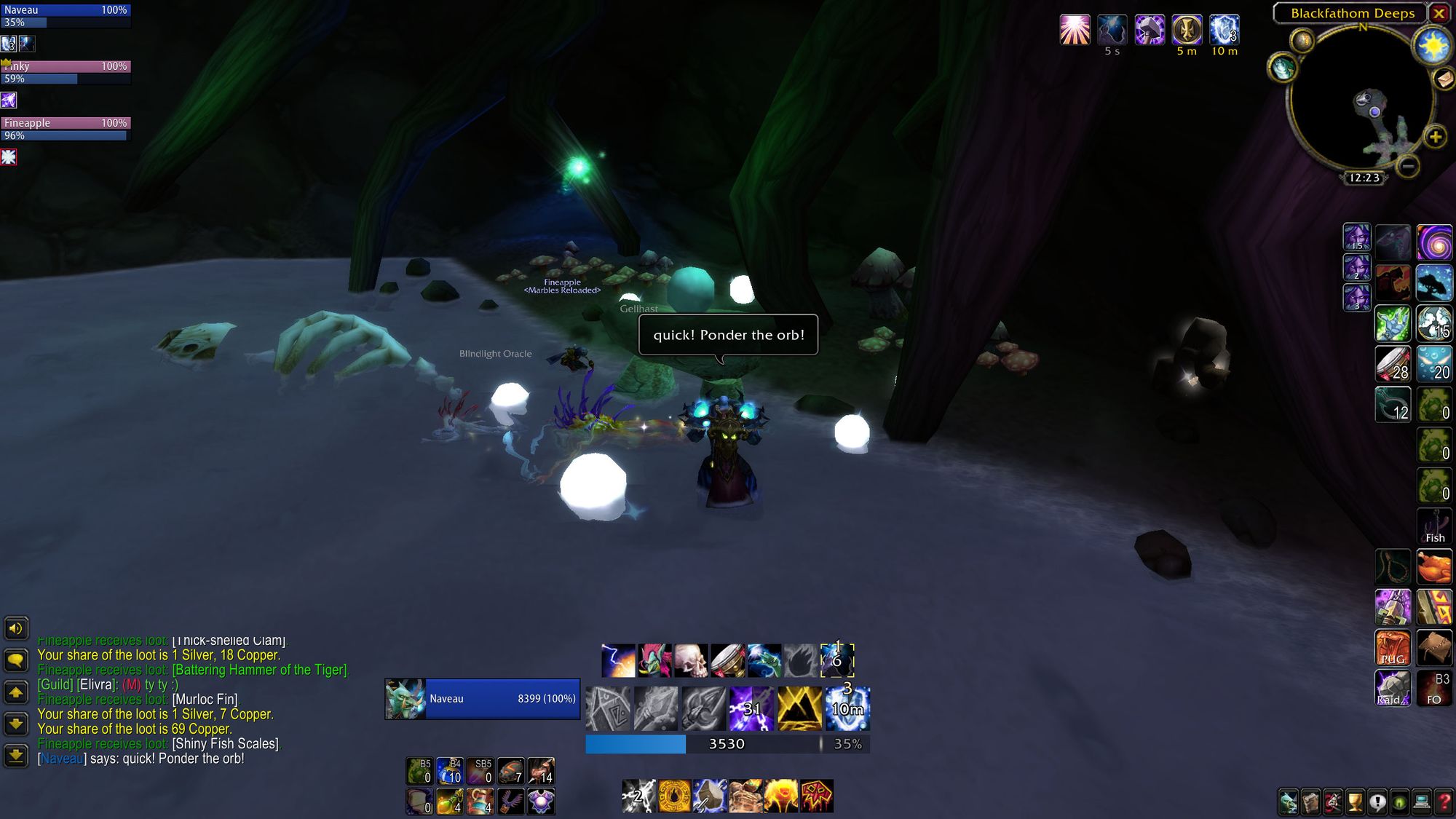
In the end, these things (along with the raids, the dailies, the grinding, the items and the classes - more on that later) helped to shape TBC into the expansion it was. Many different design decisions and storylines make up TBC - some little, some big - but it's all there to see with the benefit of hindsight. And now, until my media server packs it in again, they'll be recorded for the lifespan of my storage.
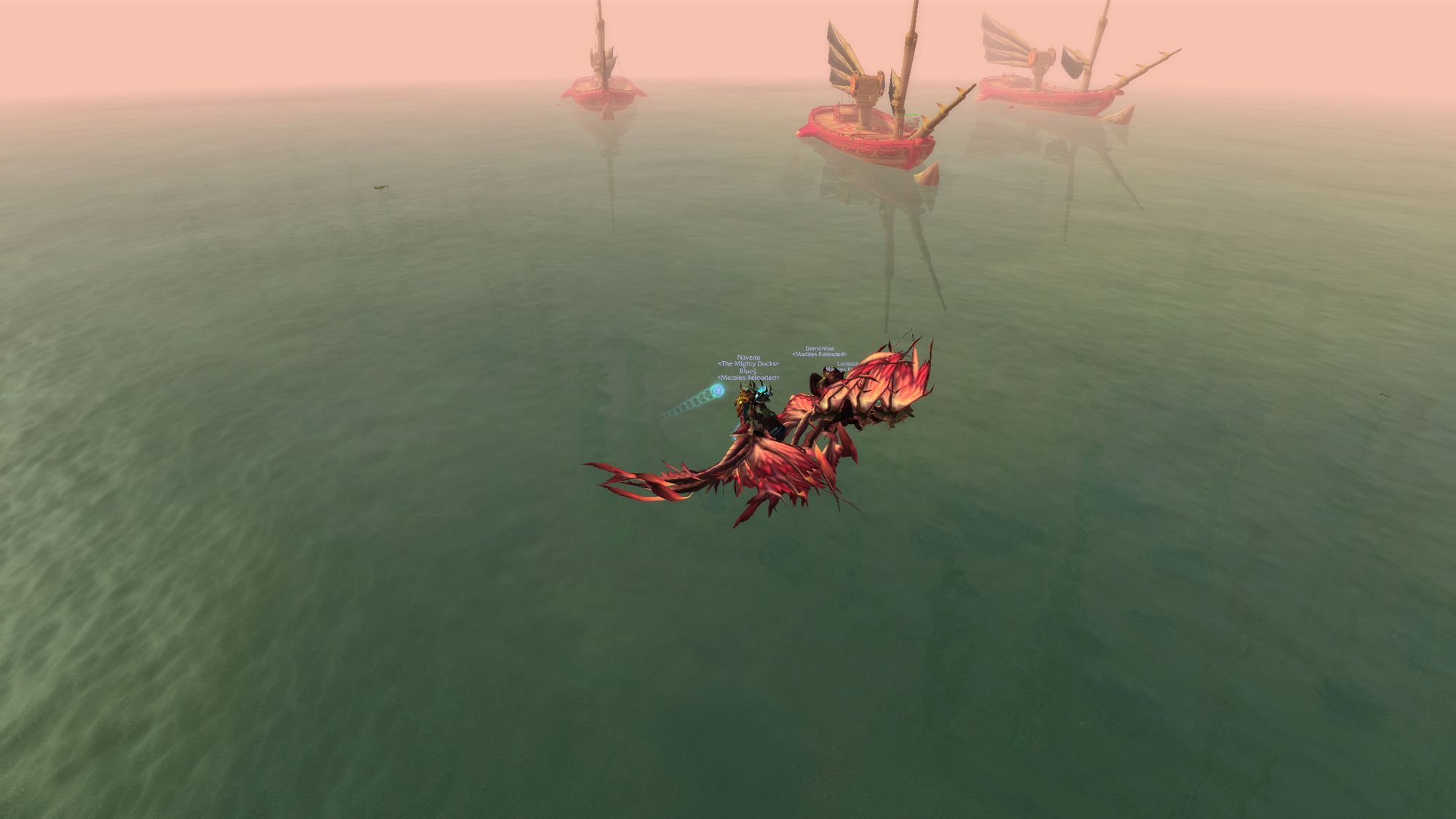
Catch you next time,
Vulkan
Did you like this article? Did you hate it? Go over and keep the discussion going on the official Vulkan's Corner facebook page! - whilst you're at it, leave a like!
